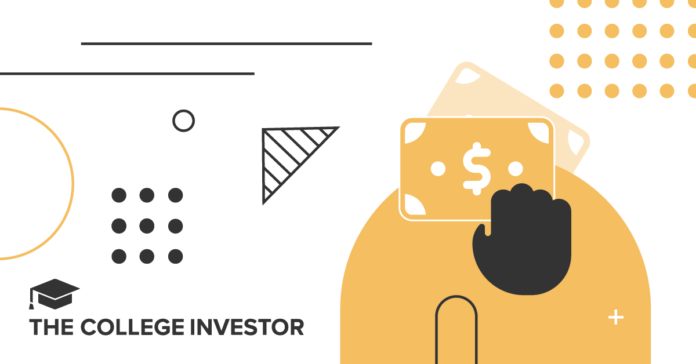- The recent court ruling blocking the SAVE plan and halting income-driven repayment (IDR) applications does not affect Public Service Loan Forgiveness (PSLF).
- While PSLF itself is unaffected, borrowers on IDR plans required for PSLF may face complications due to the temporary freeze on new IDR enrollments.
- During her confirmation hearing, incoming Education Secretary Linda McMahon reassured lawmakers that PSLF is law and will not be impacted by the broader legal fight over student loan repayment plans.
The recent pause of income-driven repayment plan applications, along with the stop work order to not process forgiveness related to income-driven repayment has scared a lot of student loan borrowers. But one program remains unaffected: Public Service Loan Forgiveness (PSLF).
Despite the expanded injunction on the SAVE repayment plan and the 90-day stop work order on income-driven repayment applications, PSLF remains operational.
However, the freeze on IDR application processing may still cause short-term challenges for borrowers working toward PSLF. Those who have not yet enrolled in a qualifying IDR plan may need to explore temporary options or see some months of payments not count towards PSLF..
For now, PSLF borrowers can still submit employment certification forms, make qualifying payments (if not in forbearance), and work toward their required 120 payments for forgiveness. But borrowers should remain aware of potential roadblocks due to broader issues affecting repayment plans.
Law That Created PSLF And Why It Remains Protected
Public Service Loan Forgiveness was established in 2007 under the College Cost Reduction and Access Act and remains a statutory program approved by Congress. Unlike the SAVE plan, which was created through executive action, PSLF is written into federal law, making it more difficult to change or eliminate.
Under PSLF, borrowers who work full-time for a qualifying nonprofit or government employer and make 120 qualifying payments can have their remaining student loan balance forgiven. The program has undergone various changes and improvements over the years, including temporary waivers that expanded access to more borrowers.
Because PSLF is based on congressional statute, it is not subject to the same legal challenges that have impacted executive-branch-created repayment plans, such as SAVE. While legal battles continue over repayment programs, PSLF remains legally intact.
Furthermore, during her Senate confirmation hearing, incoming Education Secretary Linda McMahon reaffirmed PSLF’s legal standing and stated that the administration does not intend to make changes that would restrict access to forgiveness.
How PSLF Requirements Could Be Affected By The IDR Freeze
Although PSLF itself is still active and being processed, the freeze on IDR applications may create hurdles for some borrowers. PSLF requires that borrowers make 120 payments under a qualifying repayment plan, which includes the income-driven repayment options that are currently paused.
With IDR applications currently blocked, borrowers who are not already enrolled in an IDR plan may struggle to make PSLF-qualifying payments. Also, borrowers who missed the deadline for income recertification could also be automatically placed into the standard repayment plan, which while it does count towards PSLF, it’s not ideal.
For borrowers who find themselves stuck in the standard 10-year repayment plan, or cannot afford their payments under this plan can:
- Requesting a temporary forbearance to pause payments until IDR processing resumes (which will not count for PSLF).
- Ensuring they remain employed at a qualifying employer while they navigate temporary obstacles.
- Submitting a paper PSLF form to track qualifying payments while waiting for IDR applications to be available again.
While these workarounds may not be ideal, they can help borrowers avoid unnecessary setbacks in their PSLF progress.
What Borrowers Should Expect Going Forward
With PSLF protections still in place, borrowers can continue making payments toward loan forgiveness. However, the ongoing legal fight over IDR plans could create delays or additional complications.
If you attempt to change your repayment plan right now into an IDR plan, your paperwork will not be processed. If you’re in the SAVE forbearance, your time in forbearance doesn’t directly count for PSLF, but you’ll likely be able to do PSLF Buyback and “purchase” these months back later.
Borrowers currently working towards PSLF should:
- Submit employment certification forms regularly to ensure qualifying payments are properly tracked (at least annually, but also any time you change employers).
- Check their loan servicer’s website for updates on repayment plan availability and ensure your contact information is updated and correct.
- Be prepared to take temporary action—such as requesting deferment or forbearance—if you cannot recertify your IDR plan or missed a deadline that already passed.
The Education Department is expected to provide further guidance in the coming weeks. But for now, PSLF remains available, even as other repayment options remain in limbo.
Don’t Miss These Other Stories:
Government Shutdown and Student Loans: What To Know
Can President Trump Claw Back Student Loan Forgiveness?
Department Of Education Set To Manage PSLF Program Directly
Create your very own Auto Publish News/Blog Site and Earn Passive Income in Just 4 Easy Steps







